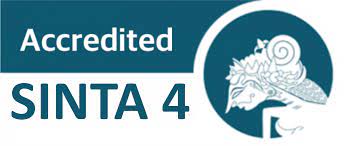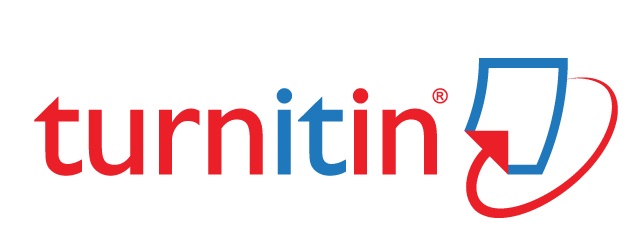Author Guidelines
Instructions for Authors
General Instructions
Jurnal Kesehatan Masyarakat Mulawarman (JKMM) or Mulawarman Journal of Public Health (MJPH) is a scientific publication media published every two months (June and December) using a "blind editor" system appointed by the Editor according to his expertise. Mulawarman Public Health Journal (JKMM) is intended for practitioners, academics, professionals, students, or the general public who are involved and interested in the development of Public Health Sciences. JKMM can receive research report articles (Original article research paper) relevant to the fields of Epidemiology, Occupational Health, and Safety, Biostatistics and Population, Health Education and Promotion, Environmental Health, Health Policy Administration, Public Health Nutrition, and Reproductive Health.
Articles submitted are original works, have never been and/or are in the process of being published in other journals, any research involving humans as research subjects and experimental animals must obtain ethical clearance from an official research ethics committee. Articles on JKMM are written following the American Psychological Association (APA) writing guidelines. Authors must ensure that all co-authors have agreed. All articles will be discussed and reviewed by experts and the editorial board. Articles that need improvement will be returned to the author to be corrected according to the reviewer's suggestion.
Types of Papers
Accepted article types: Original Articles and Reviews.
Original Articles must not exceed ……..characters (including abstract and keywords, tables, captions and references).
Review Articles must not exceed …..characters (including abstract and keywords, tables, captions and references).
Manuscript Preparation
Article Writing
The article is written in Times New Roman font, size 12 with 1.5 spaces. The distance of the left edge is 4 cm, the right edge is 3 cm, the top edge is 3 cm and the bottom edge is 3 cm. The minimum length of the article is 12 pages and a maximum of 20 pages. Articles are submitted in the form of a 1 (one) column layout. Each page is numbered sequentially starting from the title page to the last page. Number the lines consecutively in the upper right-hand corner of each page, beginning with the tittle page. Manuscript submissions that are not formatted correctly may be returned to authors.
Writing Structure
The writing structure in JKMM is as follows:
- Title Page
- Abstract
- Introduction
- Methods
- Results
- Discussion
- Conclusions
- Acknowledgments and statement of authors’ contributions to manuscript
- References
The following describes the guidelines for each writing structure:
1. Title page
The title page contains:
- the title of the article (no more than 12 words, written briefly and clearly, without abbreviations)
- author's name (without title)
author affiliation (name of department/department and institution)
- corresponding author name, e-mail address
- Funding
- Conflict of interest
- Authors’ contributions
2. Abstract
Abstracts for each article are written in Indonesian and English. The abstract is written in a concise and clear manner that describes the background, methods, results, conclusions, and suggestions (implications) of the research. The abstract is accompanied by keywords which consist of 3-5 keywords and the order is arranged alphabetically.
3. Introduction
Describe clearly the background to the research conducted, the specific objectives, knowledge gap, and the novelty of the results.
4. Methods
Provide sufficient detail to allow the replication of the research, with details of model or catalogue number when appropriate. Methods already published should be indicated by a reference and briefly explain any modifications made. Only relevant modifications should be described.
5. Results
Results should be clear and concise, without repeating the methodology, Introduction, or content in the Discussion section. Do not duplicate data from tables or figures in the text.
6. Discussion
In the Discussion, explain the significance of the results of the work, not repeat them; and the importance of the findings. Clearly state the overall conclusions.
7. Acknowledgements and statement of authors’ contributions to manuscript
Technical assistance, collages, students and advice who contributed to the research may be acknowledged in a section at the end of the text.
Statement of authors’ contributions to manuscript. The contribution(s) of the authors to the manuscript should be explained in the Acknowledgments section.
8. References
Reference list
The list of references is written according to the rules of the American Psychological Association (APA), references are written in alphabetical order. The authors can use EndNote / Mendeley also. A minimum number of references is 50% taken from the journal. The year of publication of the reference is 75% at least from the last 10 years. Avoid references in the form of personal communication. Here's an example of writing a reference:
Journal Journal with direct object identifier (DOI)
Author, A. A., Author, B. B., & Author, C. C. (Tahun). Judul artikel. Judul jurnal, volume(issue), hlm - hlm. doi:xx.xxxxxxxxxx
Journal with DOI (1 author)
Brzoska, P. (2015). Reviewing the topic of migration and health as a new national health target for Germany. Int. Journal of Public Health. 60(1)13-20. DOI: 10.1007/s00038-014-0617-z
Journal with DOI (2-7 authors) (write all authors)
Massimo, G., Trevisiol, G., Rutjes, AWS., Rainato, G., Aline S.C. Fabricio. (2016). Circulating tumor markers: a guide to their appropriate clinical use Comparative summary of recommendations from clinical practice guidelines Int J Biol Markers 2016; 31(4): e332 - e367 DOI: 10.5301/jbm.5000251
Journals with DOI (8 or more authors) (write first 6 authors, ... and last authors)
Cheng, HM., Park, S., Huang, Q., Hoshide, S., Wang, JG, Karia, K., Park, CG…Chen, CH. (2017).Vascular aging and hypertension: Implications for the clinical application of central blood pressure. Int. Journal of Cardiology. DOI: http://dx.doi.org/10.1016/j.ijcard.2016.12.170
Journal without DOI
Author, A. A., Author, B. B., & Author, C. C. (Tahun). Judul artikel. Judul jurnal, volume(issue), hlm - hlm.
Journal without DOI (1 author)
Aldukhayel, A. (2017). Prevalence of diabetic nephropathy among type 2 diabetic patients is some the Arab counteirs. Int. Journal of Health Sciences. 11 (1) 60-64.
Journal without DOI (2-7 author) (write all authors)
Sharaf, F. & Nohair, SA. (2017). Comparison of demical students’ learning approaches between electronic and hard copy team-based learning. Int. Journal of Health Sciences. 11(1) 120-130.
Journals without DOI (8 or more authors) (write first 6 authors, ... and last authors)
Alnohair, S., ALMohaimeed, A., Sharaf, F., Naeem, Z., Midhet, F., ALHomaidan, H…Winter, SJ. (2017). Intensified tuberculosis case finding, implementation of isoniazid preventive therapy and associated factors among people living with human immunodeficiency virus at public health facilities of Harari Region, Eastern Ethiopia: A cross-sectional study. Int. Journal of Health Sciences. 11(1) 35-42.
Online
journals
Ola, O. & Sedig, K. (2016). Beyond simple charts: Design of visualization for big health data. Online Journal of Public Health Informatics, 8 (3), 5-10. Retrieved from http: // http://ojphi.org/ojs/index.php/ojphi/article/view/7100/5816
Abstract as a primary source
Wool, N. J., Young, S. L., Fanselow, M. S., & Butcher, L. L. (1991). MAP-2 expression in cholinoceptive pyramidal cells of rodent cortex and hippocampus is altered by Pavlovian conditioning [Abstract]. Society for Neuroscience Abstracts, 17, 480.
Lassen, S. R., Steele, M. M., & Sailor, W. (2006). The relationship of school-wide positive behavior support to academic achievement in an urban middle school. Psychology in the Schools, 43, 701-712. Abstract retrieved from http://www.interscience.wiley.com
Abstract as a secondary source
Hare, L. R., & O'Neill, K. (2000). Effectiveness and efficiency in small academic peer groups. Small Group Research, 31, 24-53. Abstract retrieved from Sociological Abstracts database. (Accession No. 200010185).
Magazine
Olsao, S. (2005, May 16). 8 hours sleep? New study suggest some are refreshedwith less. Health and Science, 25 (8), 15 – 35.
Online
magazine
Lodewijkx, H. F. M. (2001, May 23). Individual-group continuity in cooperation and competition under varying communication conditions. Current Issues in Social Psychology, 6(12), 166-182. Retrieved from http://www.uiowa.edu/~grpproc/crisp/crisp.6.12.htm
Book
Author, A. A. (Tahun). Judul buku. Lokasi penerbit: Penerbit.
Alexie, S. (1992). The bussiness of fancy dancing: Stories and poems. Brooklyn, NY: Hang Loosse Press.
A book whose author is an agency that has an edition and is published by the agency
American Psychiatric Association. (1994). Diagnostic and statistical manual of mental disorders (4th ed.). Washington, DC: Author.
An Anonymous Author Book
Dorland’s illustrated medical dictionary (31st ed.). (2007). Philadelphia, PA: Saunders.
Chapters in Books
Booth - La Force, C., & Kerns, K.A. (2009). Child-parent attachment relationships, peer relationships, and peer-group functioning. In K.H. Rubin, W.M. Bukowski, & B. Laursen (Eds.), Handbook of peer interactions, relationships, and groups (pp. 490-507). New York, NY: Guilford Press.
Online
book
Author, A. A. (Year). Title of work. Retrieved from web address
American Nurses Association. (2010). Nursing: Scope and standards of practice (2nd Ed.). Retrieved from http://www.nursesbooks.org/ebooks/download/NursingScopeStandards.pdf
Other Online Resources
Kenney, G. M., Cook, A., & Pelletier, J. (2009). Prospects for reducing uninsured rates among chidren: How much can premium assistance programs help. Retrieved from Urban Institute website: //www.urban.org/url.cfm?ID=411823
Dissertation and Thesis
Author, A. A. (Year). Title of thesis or dissertation. Institution name, location. Vance, C. A. E. (2011). Measuring neonatal quality of life (NeoQOL) for critically-ill newborns in neonatal intensive care units
(Doctoral dissertation). University of Washington, Washington.
Conference Proceedings
Bosch, O. J., & Neumann, I. D. (2008). Brain vasopressinis an important regulator of maternal behavior independent of dams' trait anxiety. Proceedings Of The National Academy Of Sciences Of The United States Of America, 105(44), 17139-17144.
Table
Tables are arranged sequentially, each table must be given a title briefly, one space and placed above the table, table titles should be written in capital letters at the beginning of the word, except for prepositions. The maximum number of tables in each article is 6 tables.
Photo/Image/Diagram
Photos, pictures and diagrams are arranged sequentially, and given a short title and placed on top of the photo / picture / diagram with a maximum of 3 pieces.











